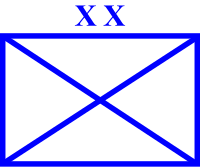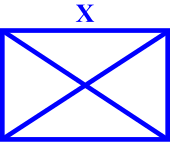2nd Corps (Vietnam People's Army)
| Quân đoàn 2 (2nd Corps) | |
|---|---|
| Active | 17 May 1974 – present |
| Country |
|
| Allegiance |
|
| Branch | Active duty |
| Type | Army Corps |
| Role | Regular force |
| Size | Corps |
| Part of | Vietnam People's Army |
| Garrison/HQ | Lạng Giang, Bắc Giang |
| Engagements |
Vietnam War Cambodian–Vietnamese War |
| Decorations |
|
| Commanders | |
| Current commander | Maj. Gen.Phạm Văn Hưng |
| First commander | Maj. Gen. Hoàng Văn Thái |
2nd Corps (Vietnamese: Quân đoàn 2) or Hương Giang Corps (Vietnamese: Binh đoàn Hương Giang, literally: Corps of the Perfume River) is one of the four regular army corps of the Vietnam People's Army. First organised in 1974 during the Vietnam War, 2nd Corps had a major role in the Ho Chi Minh Campaign that ended the war. Today the corps is stationed in Lạng Giang District, Bắc Giang.
- Commander: Maj. Gen. Phạm Văn Hưng
- Political Commissar: Maj. Gen. Nguyễn Văn Đủ
History
In July 1973, the Central Committee of the Communist Party of Vietnam after its 21st conference issued a resolution of strengthening the armed forces to unify the country. In executing the issue, three months later the Ministry of Defence and the Military Commission of the Central Committee approved the plan of organising regular army corps for the Vietnam People's Army. On 17 May 1974,[1] General Võ Nguyên Giáp, Minister of Defence, signed the edict that led to the establishment of the 2nd Corps in Thừa Thiên, now Thừa Thiên–Huế Province, where is located the Perfume River (Sông Hương or Hương Giang), that came the name Hương Giang Corps of the unit.[2] The first headquarters of the corps consisted of political commissar (chính ủy) Lê Linh and commander (tư lệnh) Hoàng Văn Thái.
In early 1975, 2nd Corps was a major force of the Vietnam People's Army in Hue-Da Nang and Tây Nguyên Campaign. During the Ho Chi Minh Campaign, it was 2nd Corps that first advanced in the city of Saigon and captured the Independence Palace, which was the workplace of the president Duong Van Minh of South Vietnam. Colonel Bùi Quang Thận, then a Captain in the 2nd Corps, was the person who raised the flag of Liberation Army in the roof of the Independence Palace and marked the end of the Vietnam War. After the war, 2nd Corps continued to engage in Laos (1976–1979) and Cambodian–Vietnamese War (1978–1979). The corps was awarded the title Hero of the People's Armed Forces (Anh hùng Lực lượng vũ trang nhân dân) in 1985.[2]
Organisation
The command structure of 2nd Corps consists of the High Command (Bộ tư lệnh), the Staff of 2nd Corps (Bộ tham mưu), the Political Department (Cục chính trị), the Department of Logistics (Cục hậu cần) and the Department of Technique (Cục kỹ thuật). The combat forces of the corps include the 304th Infantry Division, 306th Infantry Division, 325th Infantry Division, 673rd Division of Air Defence, 203rd Tank Brigade, 164th Artillery Brigade and 219th Brigade of Engineers.[2]
-
 304th Infantry Division
304th Infantry Division -
 306th Infantry Division
306th Infantry Division -
 325th Infantry Division
325th Infantry Division -
 673rd Air Defence Division
673rd Air Defence Division -
 203rd Tank Brigade
203rd Tank Brigade -
 164th Artillery Brigade
164th Artillery Brigade -
 219th Engineers Brigade
219th Engineers Brigade
Commanders
| Time | Commander | Notes |
|---|---|---|
| 1974–1975 | Maj. Gen. Hoàng Văn Thái | Later promoted to Lieutenant General and Director of the General Department of Technique. |
| 1975–1979 | Maj. Gen. Nguyễn Hữu An | Later promoted to Colonel General and Director of the Advanced Military Academy. |
| 1979–1982 | Maj. Gen. Nguyễn Chơn | |
| 1983–1988 | Maj. Gen. Bùi Công Ái | |
| 1988–1992 | Maj. Gen. Nguyễn Phúc Thanh | Later promoted to Lieutenant General, Deputy Minister of Defence of Vietnam and Deputy President of the National Assembly of Vietnam. |
| 1992–1994 | Maj. Gen. Nguyễn Văn Rinh | Later promoted to Colonel General and Deputy Minister of Defence. |
| 1995–2000 | Maj. Gen. Phạm Xuân Thệ | Later promoted to Lieutenant General and Commander of the 1st Military Region. |
| 2000–2004 | Maj. Gen. Phạm Ngọc Khóa | Later promoted to Lieutenant General and Director of the Department of Operation, General Staff. |
| 2004–2007 | Maj. Gen. Thiều Chí Đinh | |
| 2007–2011 | Maj. Gen. Nguyễn Đức Thận | |
| 2011–present | Maj. Gen. Phạm Văn Hưng |
Notes
- ↑ Ministry of Defence of Vietnam (2009). White book of Defence of Vietnam (in Vietnamese). Hanoi: World Publishing House. p. 111.
- 1 2 3 "Quân đoàn 2". Từ điển Bách khoa toàn thư Việt Nam (in Vietnamese).
References
- High Command of the 2nd Corps, Vietnam People's Army (2004). History of the 2nd Corps (1974–2004) (in Vietnamese). Hanoi: People's Army Publishing House.